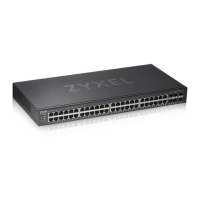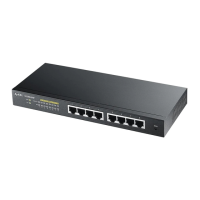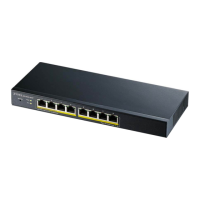GS1920 Series User’s Guide
249
CHAPTER 28
Layer 2 Protocol Tunneling
28.1 Layer 2 Protocol Tunneling Overview
This chapter shows you how to configure layer 2 protocol tunneling on the Switch.
28.1.1 What You Can Do
Use the Layer 2 Protocol Tunnel screen (Section 28.2 on page 250) to enable layer 2 protocol
tunneling on the Switch and specify a MAC address with which the Switch uses to encapsulate the
layer 2 protocol packets by replacing the destination MAC address in the packets.
28.1.2 What You Need to Know
Layer 2 protocol tunneling (L2PT) is used on the service provider's edge devices.
L2PT allows edge switches (1 and 2 in the following figure) to tunnel layer 2 STP (Spanning Tree
Protocol), CDP (Cisco Discovery Protocol) and VTP (VLAN Trunking Protocol) packets between
customer switches (A, B and C in the following figure) connected through the service provider’s
network. The edge switch encapsulates layer 2 protocol packets with a specific MAC address before
sending them across the service provider’s network to other edge switches.
Figure 174 Layer 2 Protocol Tunneling Network Scenario
In the following example, if you enable L2PT for STP, you can have switches A, B, C and D in the
same spanning tree, even though switch A is not directly connected to switches B, C and D.
Topology change information can be propagated throughout the service provider’s network.
To emulate a point-to-point topology between two customer switches at different sites, such as A
and B, you can enable protocol tunneling on edge switches 1 and 2 for PAgP (Port Aggregation
Protocol), LACP or UDLD (UniDirectional Link Detection).
1
2
A
C
Service Provider's
Network
STP
CDP
B
VTP
STP
VTP
CDP

